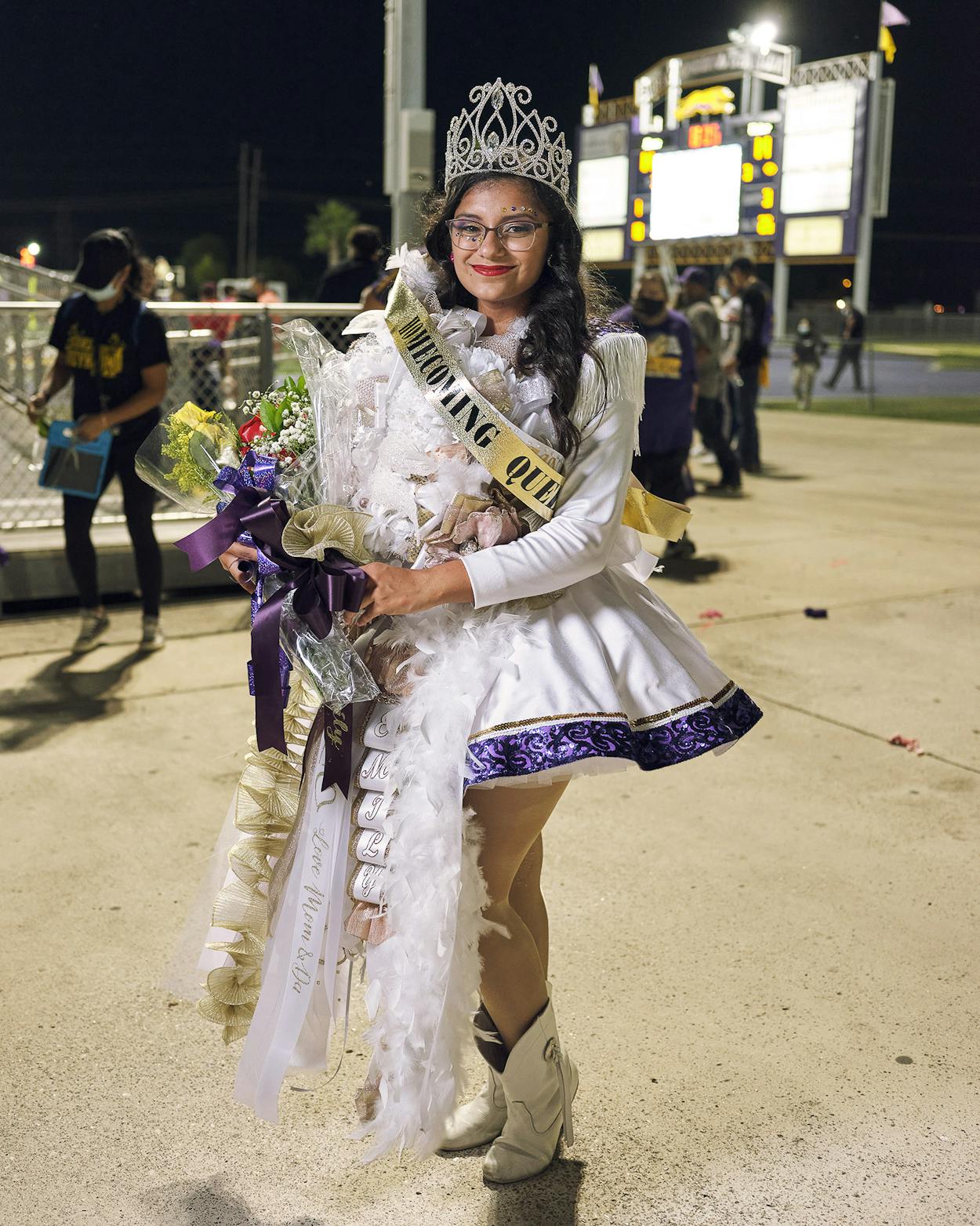Like bugs to a lantern, hundreds of San Benito Greyhounds fans were drawn to the lights of the Bobby Morrow football stadium on a warm Friday night in early October. For at least a mile out, cars were backed up, their drivers waiting impatiently to park, while a line of teenagers and families on foot filed toward the field, anxious to make kickoff for the big game. It was homecoming weekend, which is one of the biggest events of the year in this South Texas community of 24,000. Inside, the bleachers overflowed with people of all ages. Adults stood alongside the fenced-in field, while the youngest kids flitted in and out of the stands, gabbing and laughing, congregating and purchasing snacks. Outside, more fans waited to enter, standing in a long line for tickets near the box office. As the large mass of people moved about, a familiar tinkle of trinkets and bells cut through the din.
You hear the homecoming mum before you see it, but when you see it, you really take a look. For decades, high schoolers across the state have crafted (or enlisted others to craft) these all-out bouquets, glueing together silk flowers, ribbons, teddy bears, and plastic trinkets for an individualized, sparkling token of school spirit. Typically, the mum is given to a student by a date or a parent to wear on the day of the homecoming game. The bouquet might feature the school colors—purple and gold in this case—and the wearer’s name and graduating year. Statewide, seniors often wear white and gold. Whatever the mum’s final form, the traditional corsage is revered as a rite of passage for Texas teens. It’s also, increasingly, an over-the-top, outrageous opportunity for creative expression.
In the week leading up to this moment, Jessica Torres, a Harley-driving mom of six from nearby Harlingen, pulled a double all-nighter to finish the 53 mum orders that came from San Benito students. As the full-time crafter behind Jess Creations for the past twenty years, Torres works around the clock to complete roughly three hundred mum orders between August and November, waking up at six each morning to begin braiding ribbons, applying hot glue, and tracing looping letters in glitter. A professionally made mum sells for between $45 and $700, depending on its level of extravagance. She goes to bed at 3 a.m. each weekday, then wakes up to do it all again. Swimming in mums, Torres barely has the time to chat on the phone with me, though she’s as cheery and gracious as you’d expect a dealer in sparkle to be.
“They just want bigger [in San Benito],” says Torres. “‘I have to have the bigger mum than so and so. I have to have the biggest mum for my daughter’ … For some reason this year, they wanted much more. They wanted to stand out.”
Such commitment to what essentially amounts to a pile of plastic can be hard to explain to people who grew up outside Texas. “Is it, like, a contest?” a friend raised in Pennsylvania once asked me. (De facto, yes.) “Is it supposed to look like that?” queried a Maryland newcomer, by which he meant: Is it supposed to be so … much?
“People out of Texas don’t understand this. This is a huge, extra thing,” says Abel Gonzalez Mencio, a master florist at Casa Granada Floral in La Feria who, like Torres, is up to his elbows in glitter when I reach him. “Where else in the world could you sell ribbon, staples, hot glue, a silk flower, and glitter and make hundreds of dollars on it?”
Almost exclusively in Texas, it turns out. Though mums can be spotted in some parts of Oklahoma and Arkansas, the tradition seems to have stayed mostly within our borders.
That doesn’t mean it was born here. Though Texans would love to claim the homecoming mum, the bouquet’s origin story is contested, with both the University of Missouri and Baylor claiming provenance. What is known is that the mum started out in the early twentieth century as a simple chrysanthemum corsage, chosen for its seasonality and given by young men to their dates for the homecoming game. Then Texans took the tradition and ran with it, making it completely, excessively, our own.
Between the seventies and nineties, the real flower was supplanted by a silk version, more capable of withstanding the assault of glue, staples, and glitter required to make the final product. This change allowed the mums to last longer and to grow bigger—and bigger—as is a Texan’s predilection for all things.
Perhaps the biggest mums come from North Texas, a region not known for its embrace of subtlety. This month, Arlington ISD’s special education department set a Guinness World Record for the largest homecoming mum, creating a 22-foot, pink-and-white mum for Breast Cancer Awareness Month. And in 2019, Arlington was also the home of an eighteen-foot Whataburger-themed mum, created for an art exhibition.
But the mums are growing in South Texas too; a Corpus Christi woman is now vying for the Guinness World Record with a whopping 78-foot mum. And Torres says she’s noticed more requests for large mums over the past five years, a change she credits to social media.
“I swore I was never going to do it. I said, ‘No, that’s outrageous,’” says Torres. She eventually gave into customers’ demands. “But I still keep them classy.”
Gonzalez Mencio, the florist from La Feria, has been creating mums, including gigantic, multi-flower pieces, for the past four decades. Increasingly, he says, teens are asking for full sashes of mums, requiring five to ten silk flowers. His process is similar to the making of a couture gown: he measures the mum wearer and then crafts an original, bespoke piece taking into account the student’s trinket preferences and budget. When the bouquets are complete, he hosts reveal parties, offering wine for the parents paying for the extravagance.
This year, the ante has been upped once more. Because teens and their parents sorely missed last year’s mum experience because of COVID-19, the bouquets are returning bigger than ever.
“They want their kids to have something normal. They know that this pandemic has just turned us upside down,” says Gonzalez Mencio. One client (his favorite kind) recently told him that money was no object.
___
Back at the homecoming game, I spot a middle-schooler wearing one of the biggest mums of her peer group. There’s a stuffed greyhound, the San Benito mascot, tucked into the silk flower. When I ask where she got it, she asks, “Do you have an Instagram?” sounding doubtful, before pulling up Torres’s account, @Jess_Creations. Other common answers to that question include: “My mom’s friend” or “My friend’s mom’s aunt.” As we’re speaking, a phalanx of tiny cheerleaders—each maybe six years old—walk by with miniature mums affixed to their uniforms.
The monster mums I’d come to see are largely reserved for the gridiron. They sparkle intensely, draped over cheerleader megaphones and hung from the dresses of the homecoming court members, who take the field at halftime. From the sidelines, the behemoths shimmer and so completely obscure the teen girls that I have to squint to make out the color of the dresses they’re wearing. Tonight, elsewhere in the Valley, a client of Gonzalez Mencio’s will win the title of homecoming queen, and her mum will outsparkle her crown.
Flowers don’t last forever, but paper, plastic, and glitter can. A thing about mums: they’re worn for maybe twelve hours, to the football game only, never to the homecoming dance. After all of the expense, extravagance, and excitement poured into their creation, the faux bouquets occupy a moment that’s as fleeting as senior year. I ask many of the students what they’ll do with their mums when the game is over. They’ll keep them, they say, hang them up in their room as decor, next to all of the other mums from years past. Torres can still remember her first, given to her in fourth grade.
“I was the one that had the biggest mum,” she recalls. “And it was beautiful. I fell in love with that mum. I kept it forever, even though the flowers had died.”
Below, browse scenes from Abel Gonzalez Mencio’s mum shop and from homecoming night in San Benito:
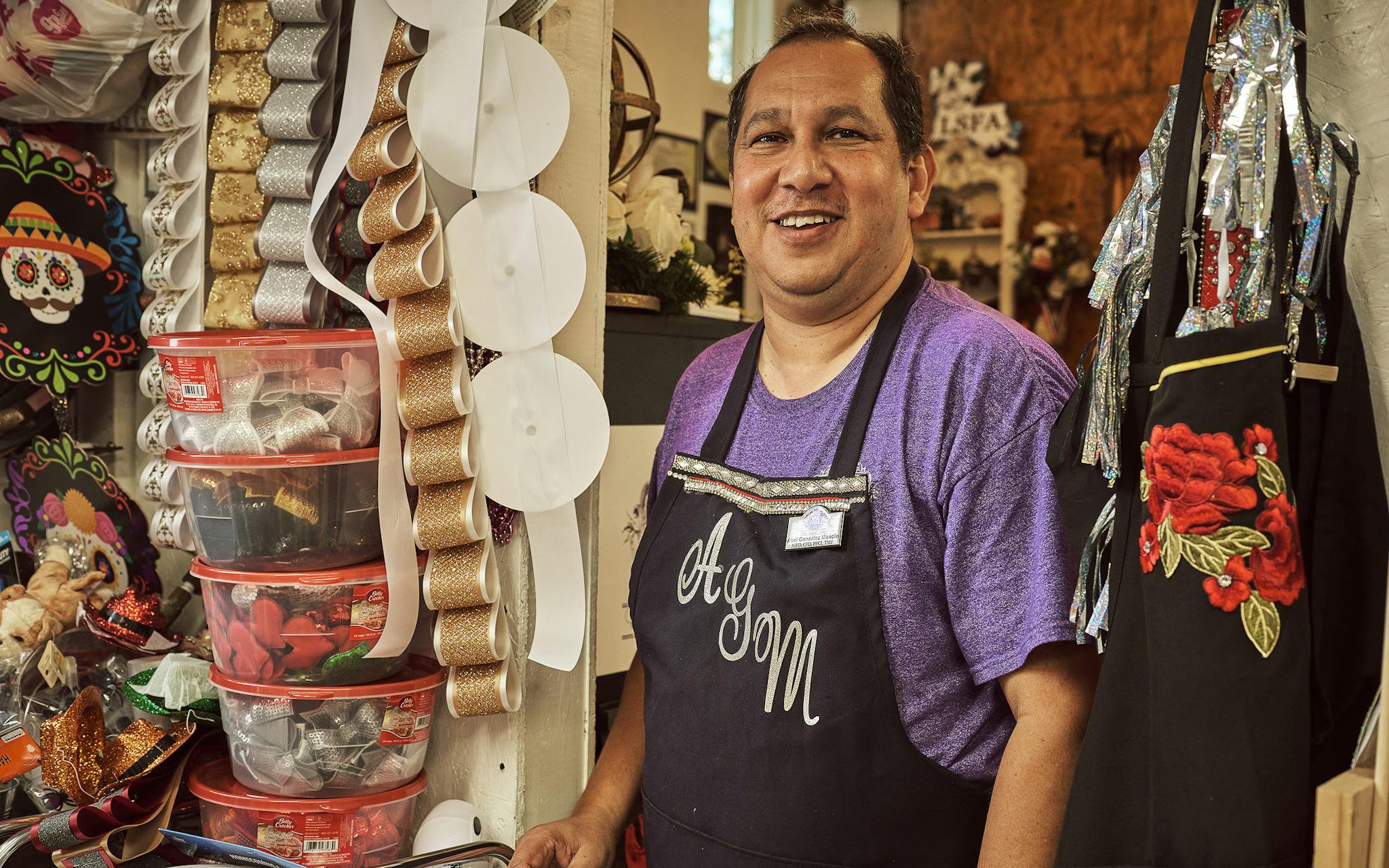
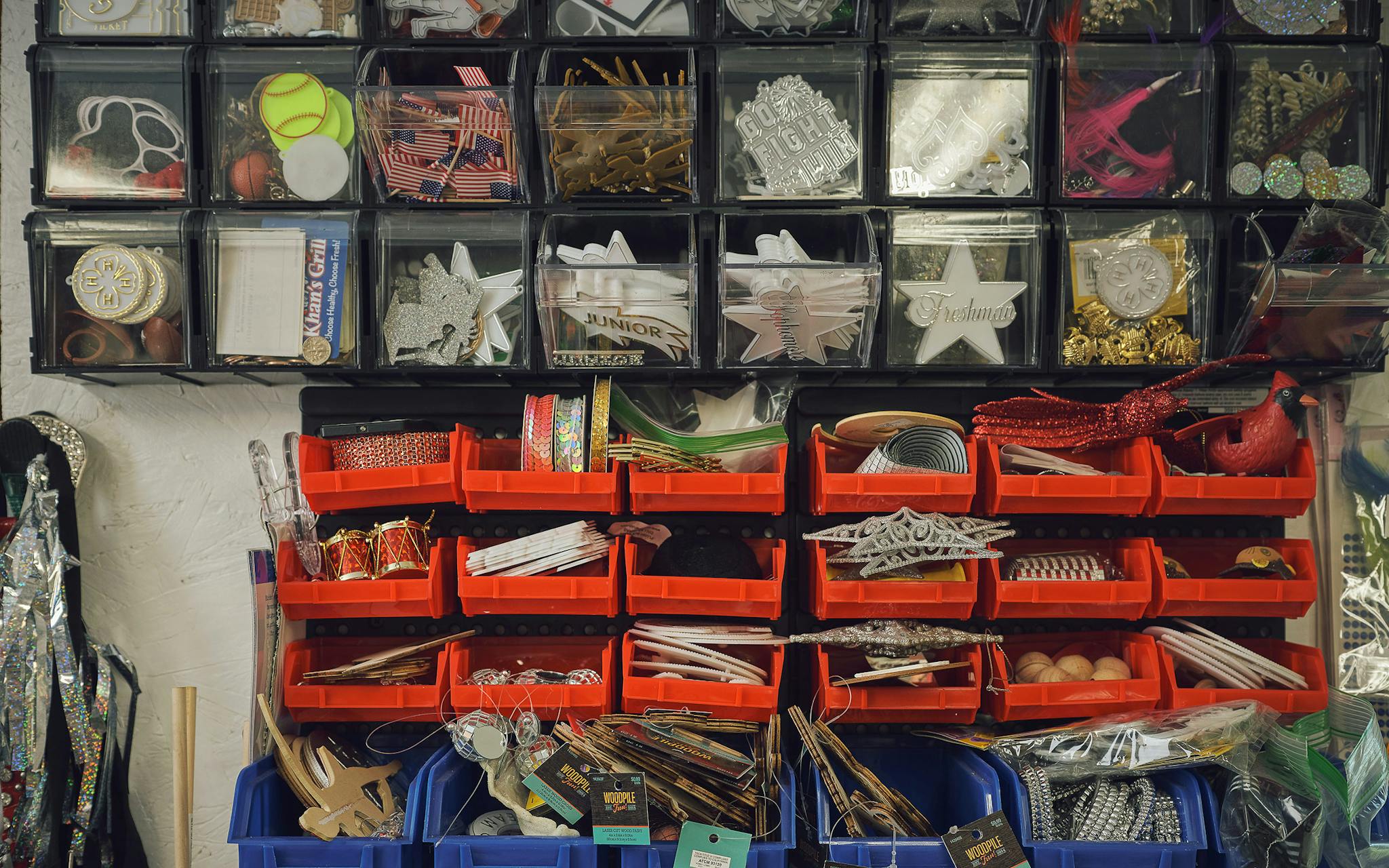
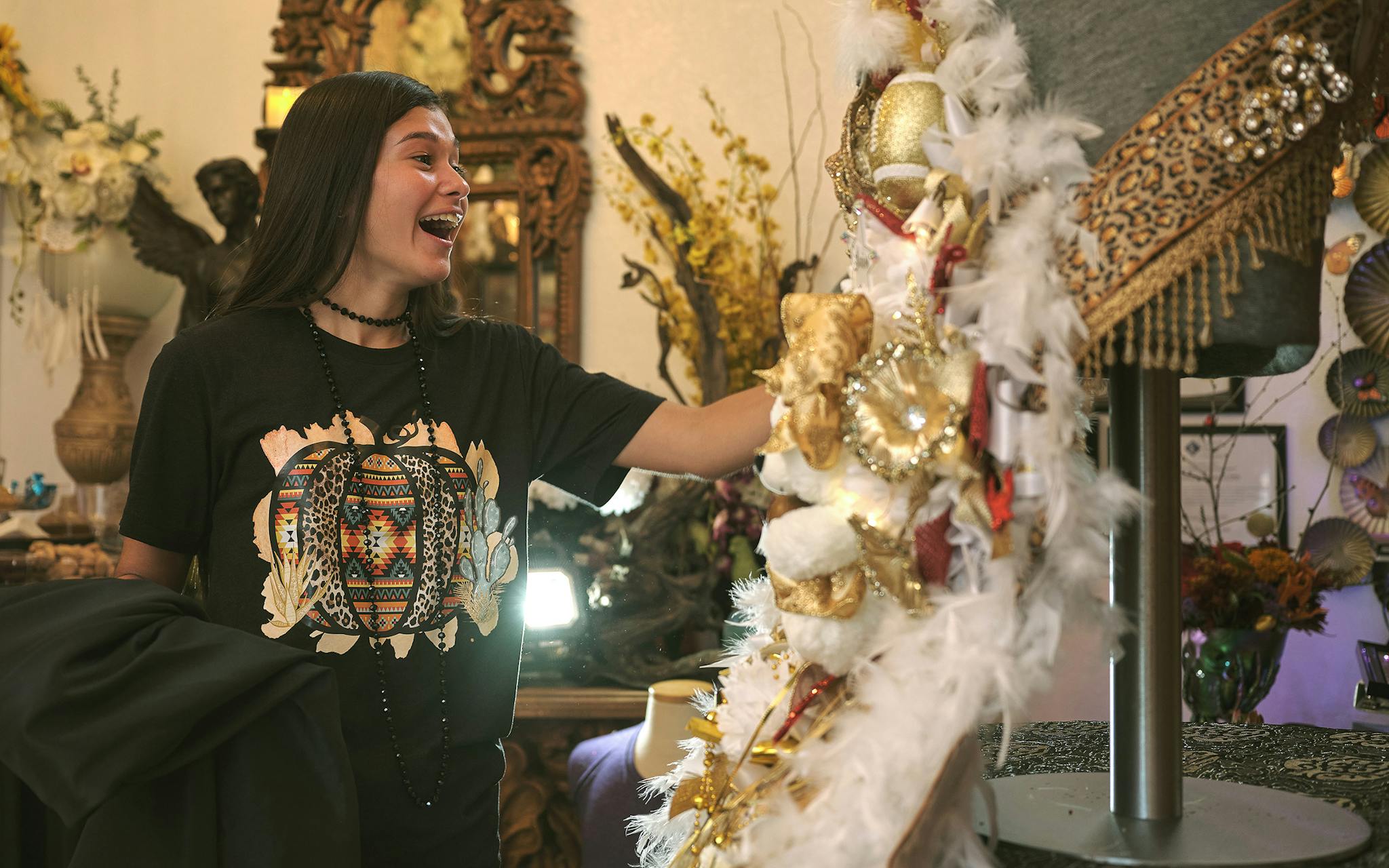
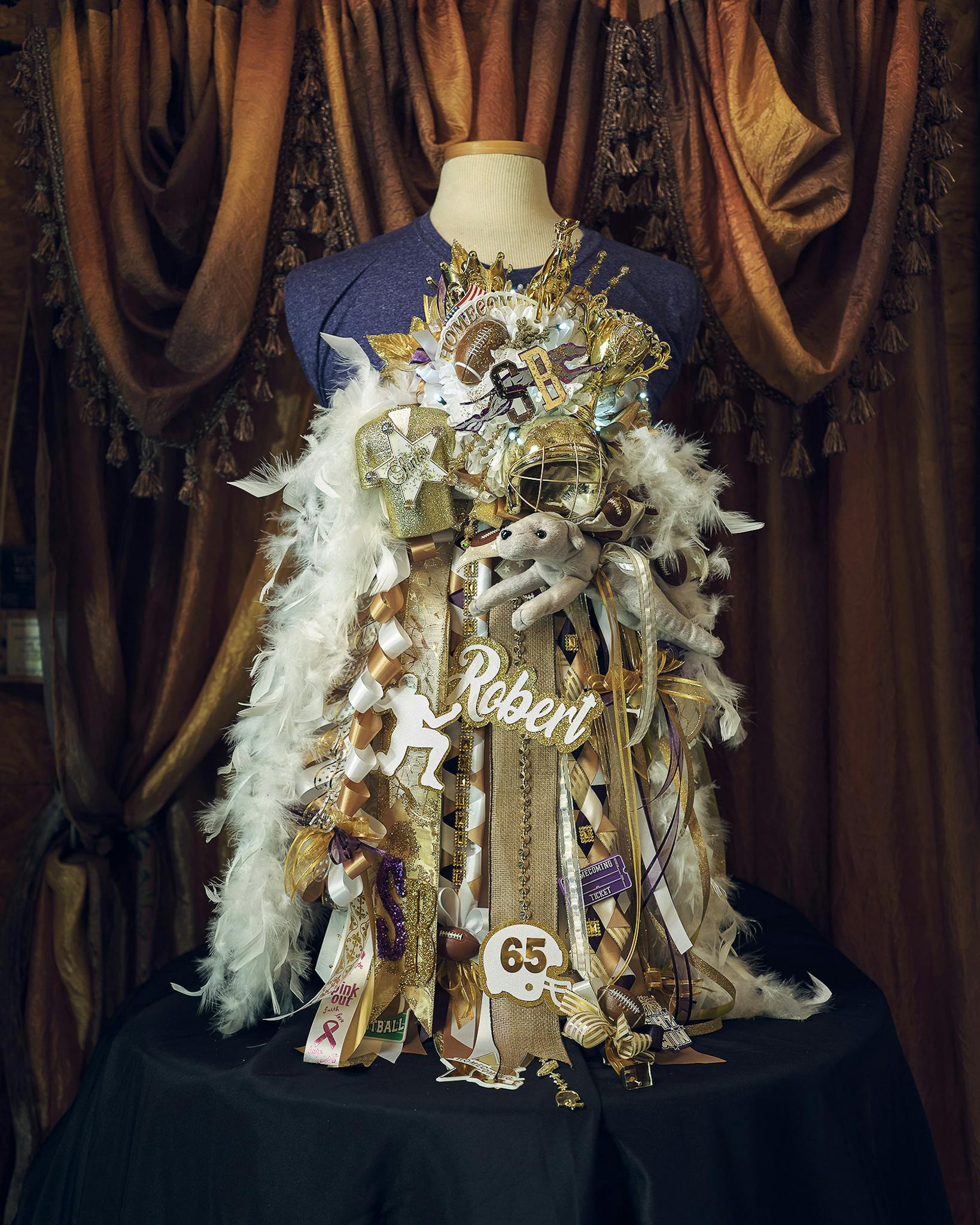

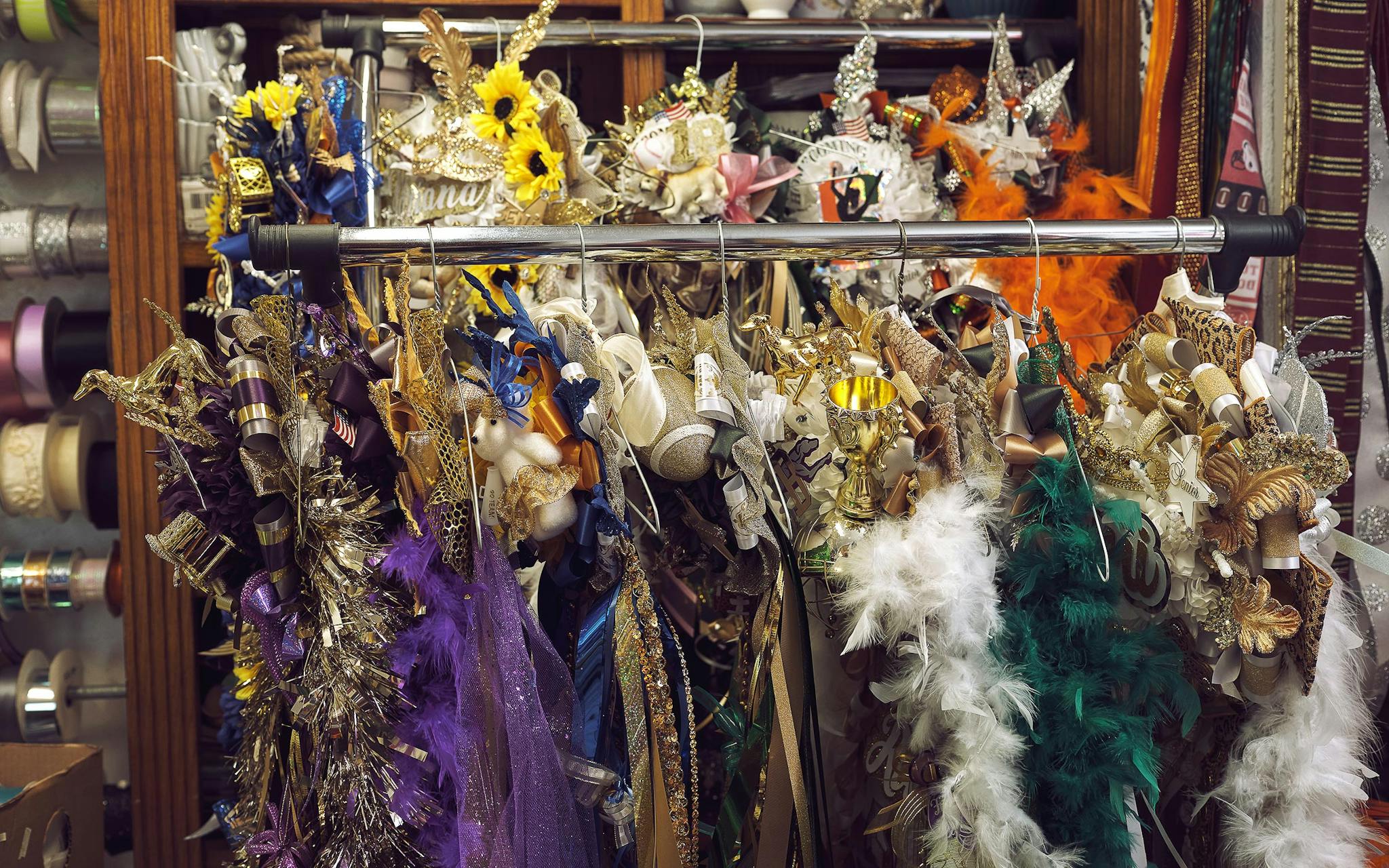
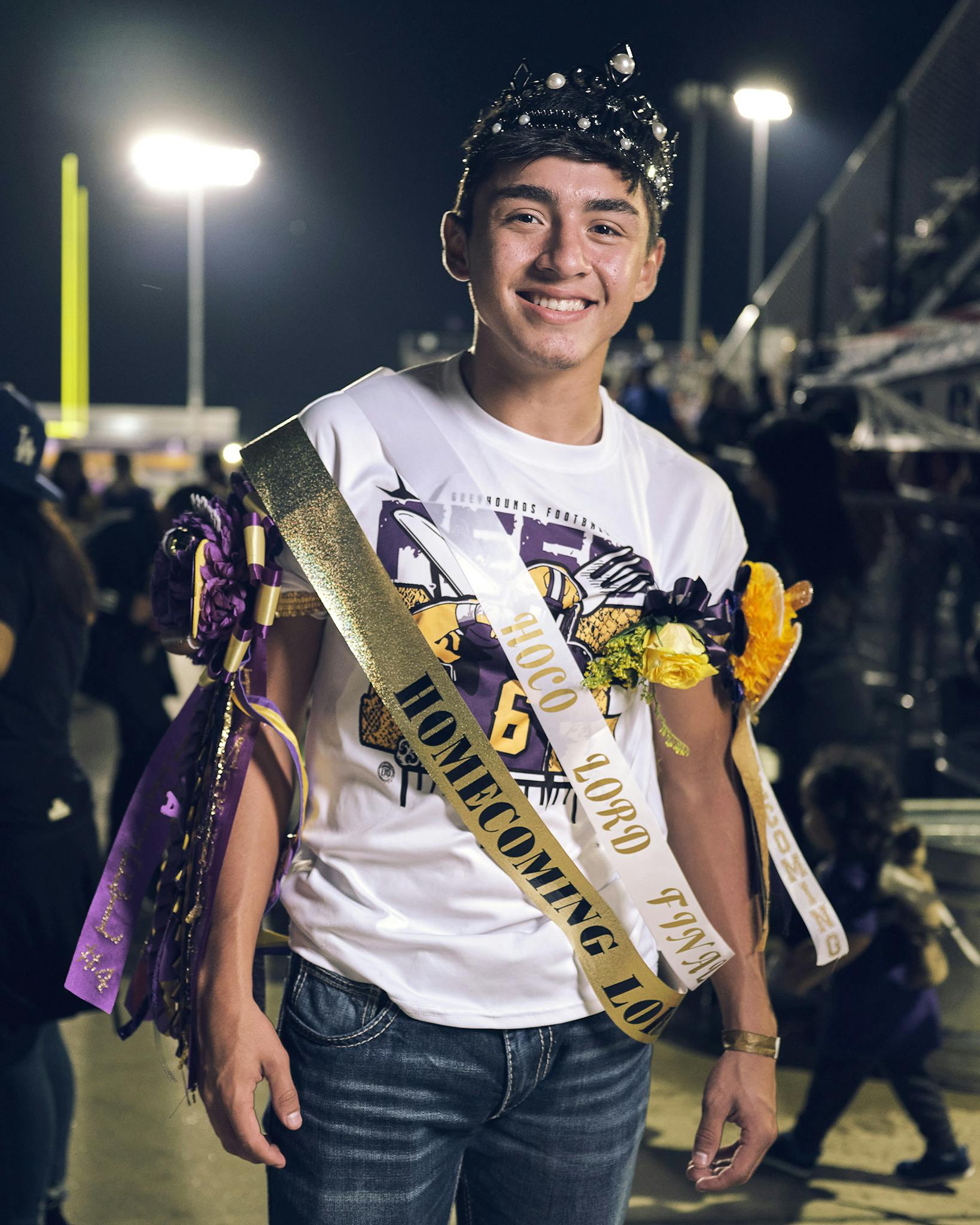
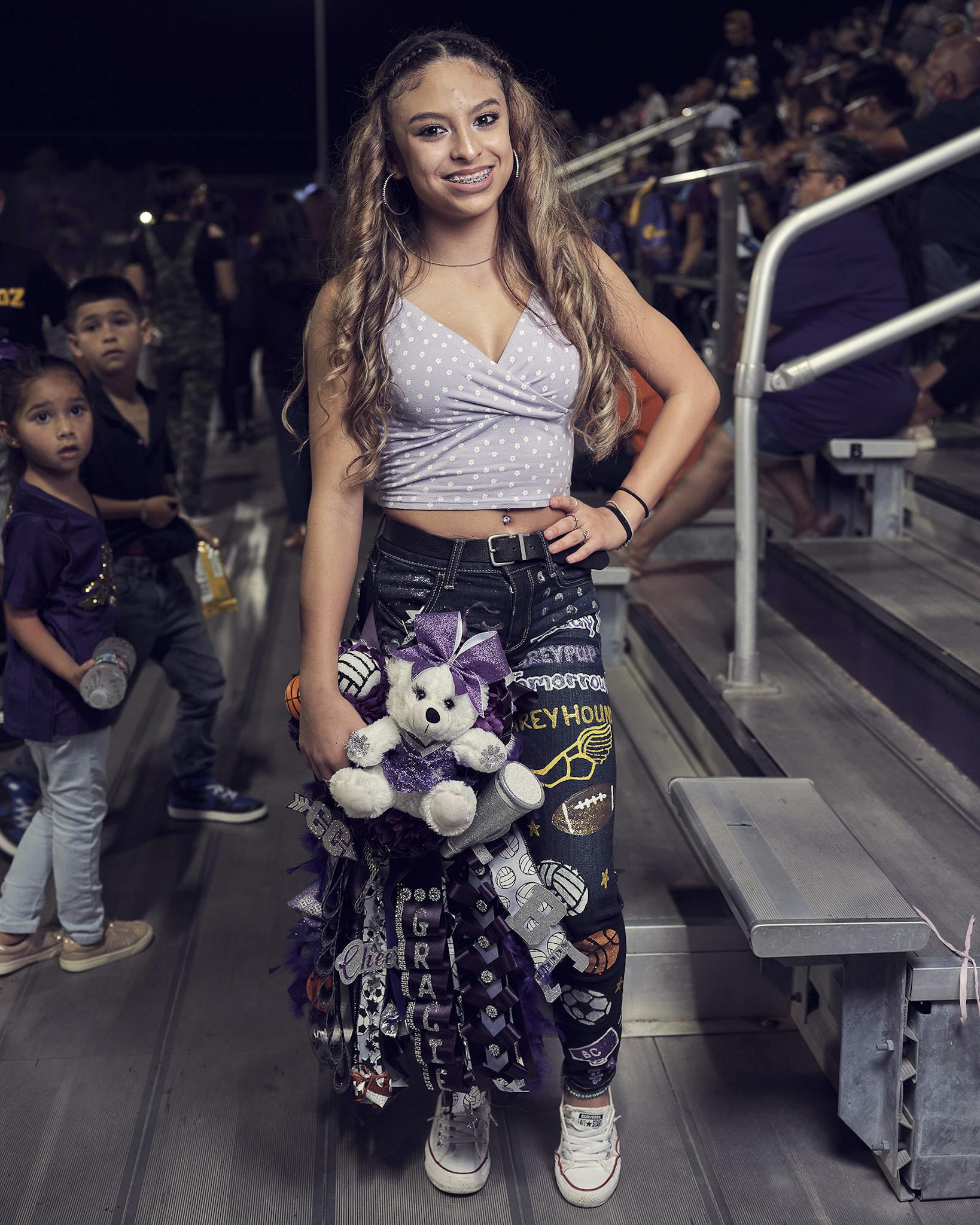
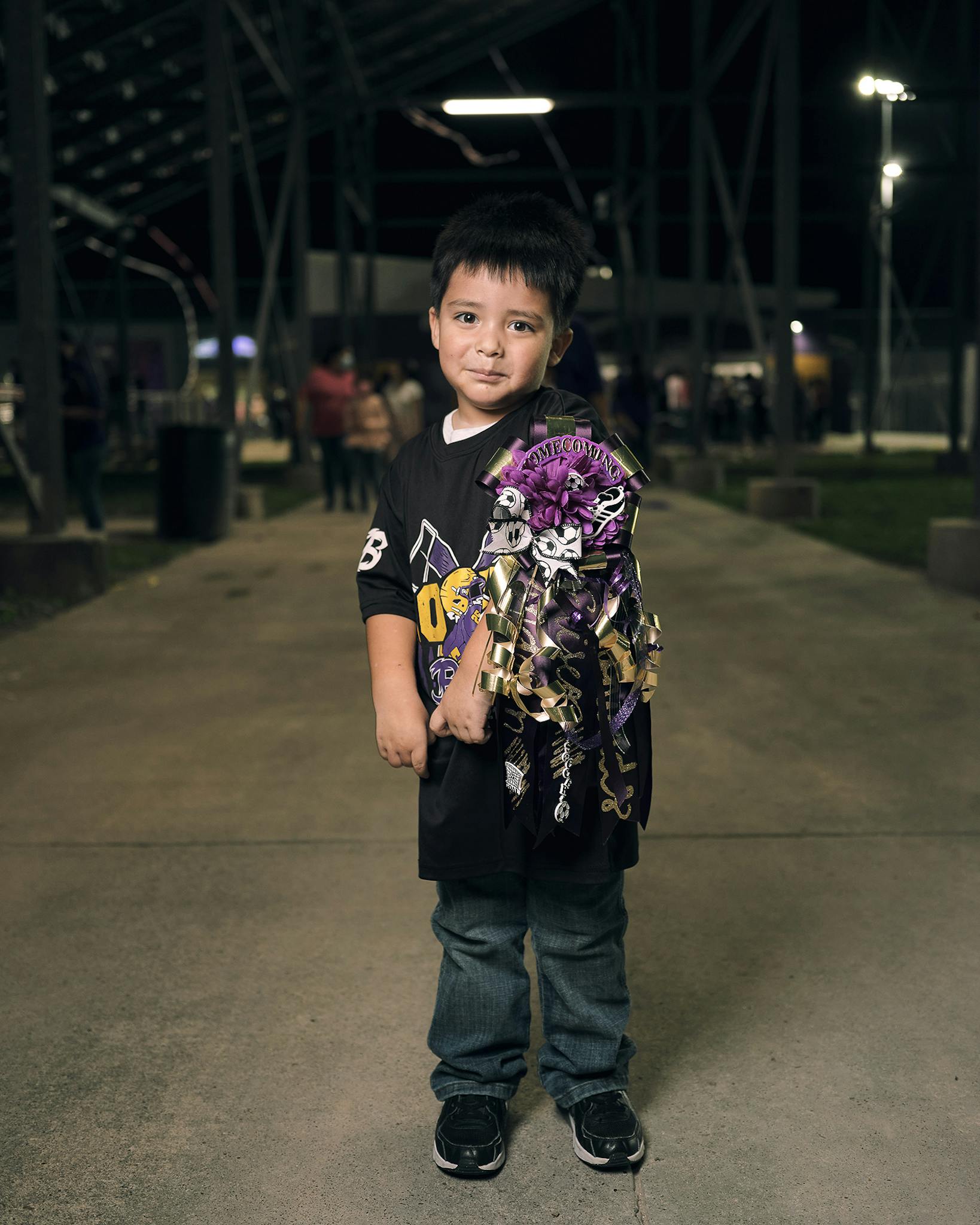
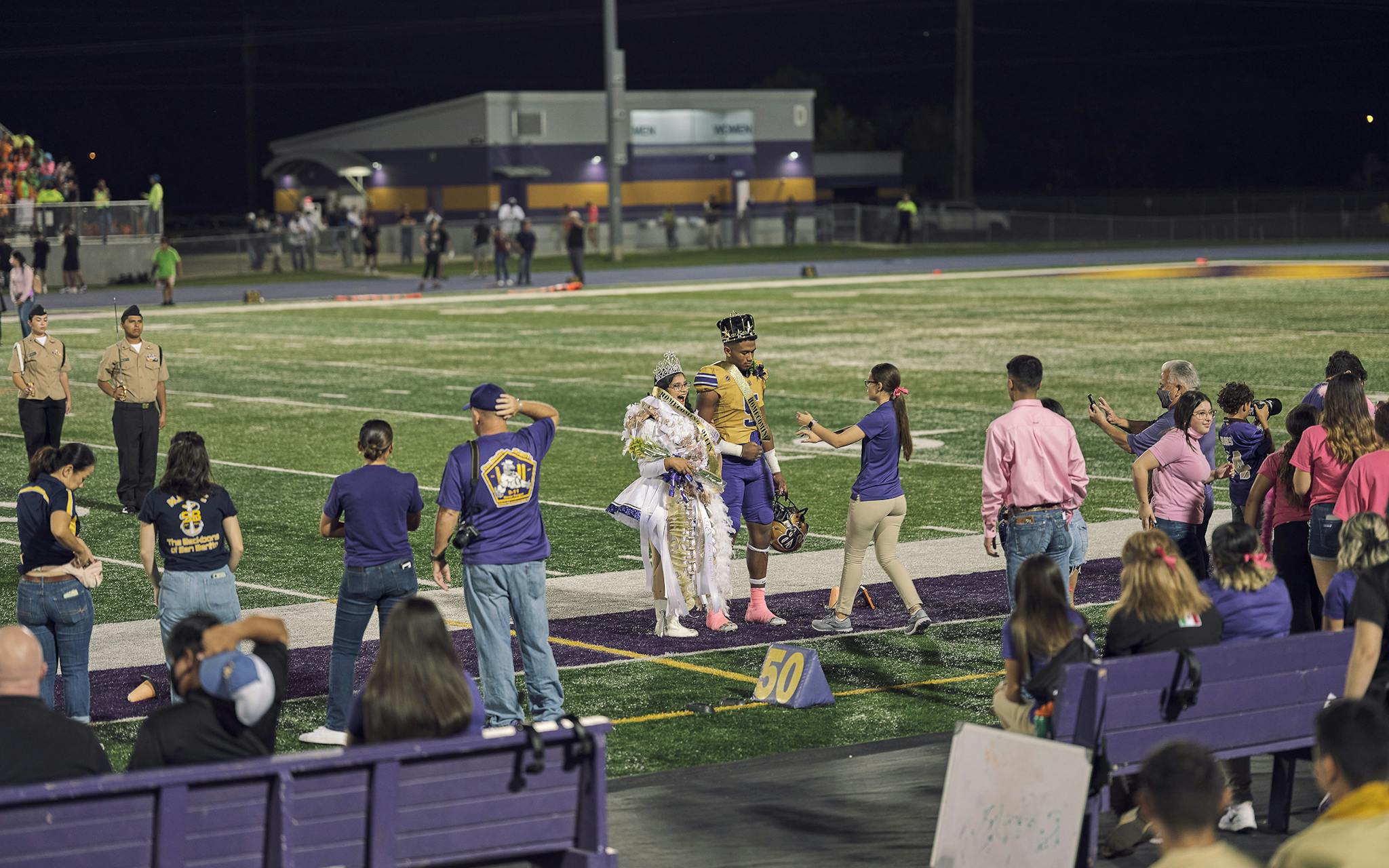
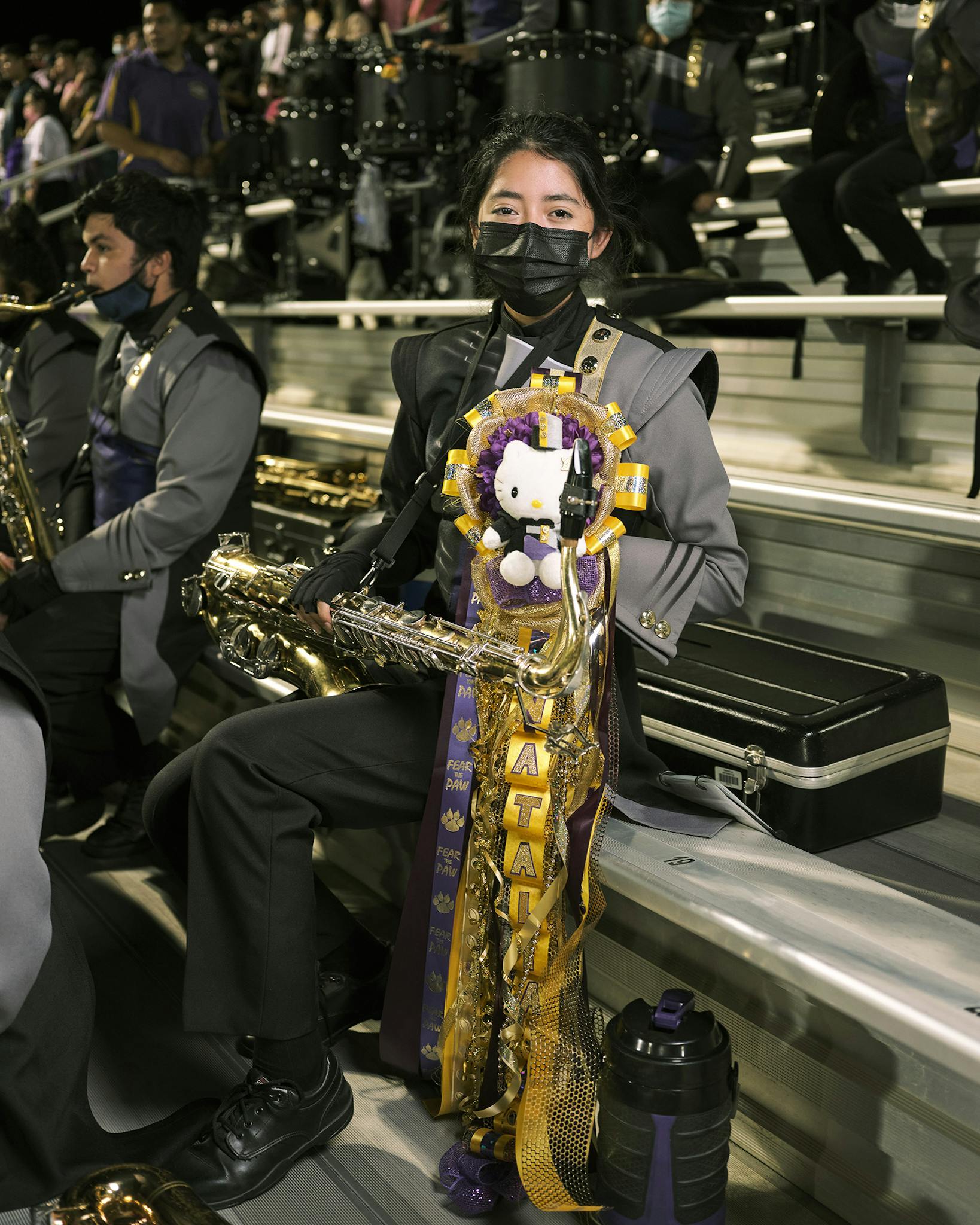
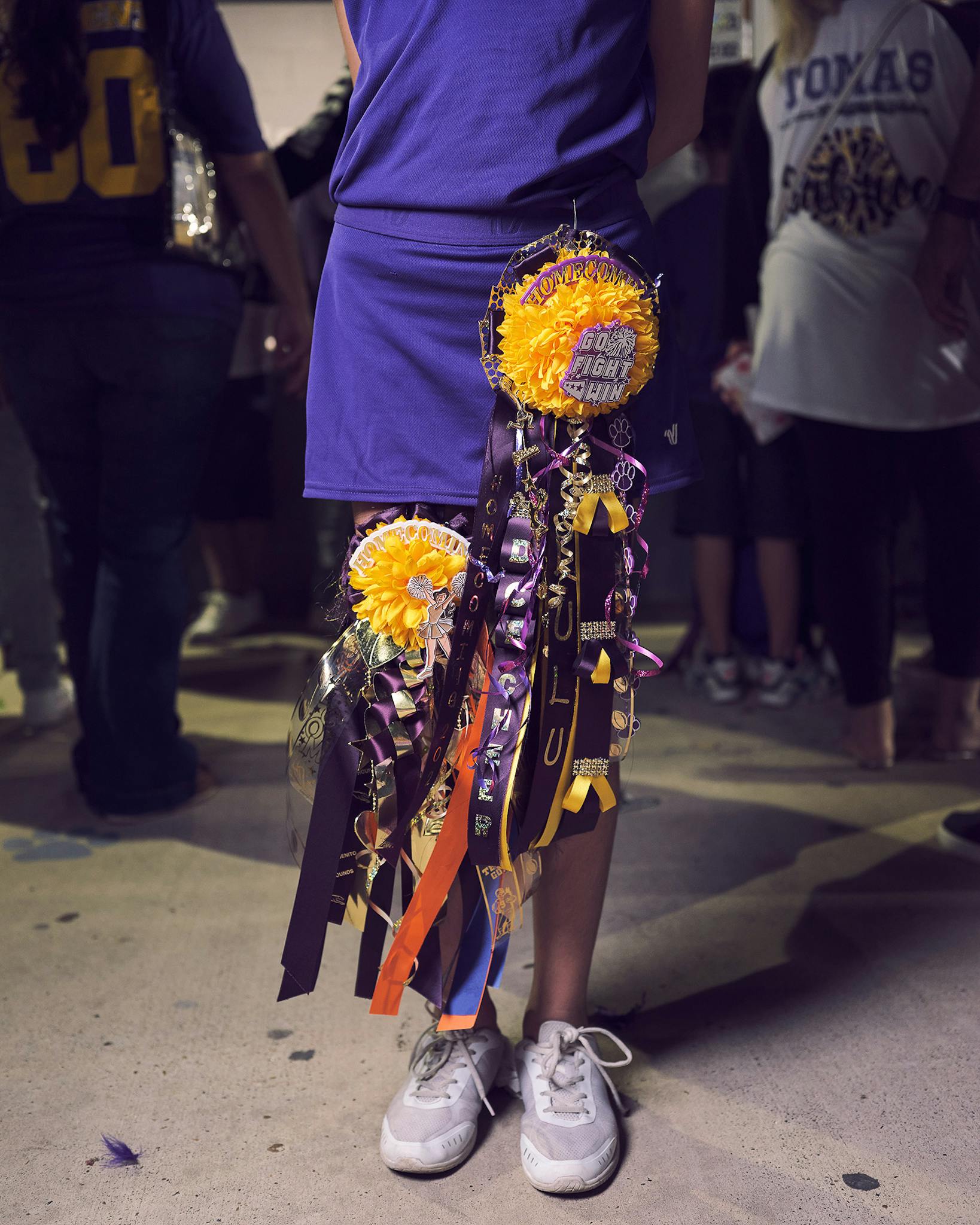
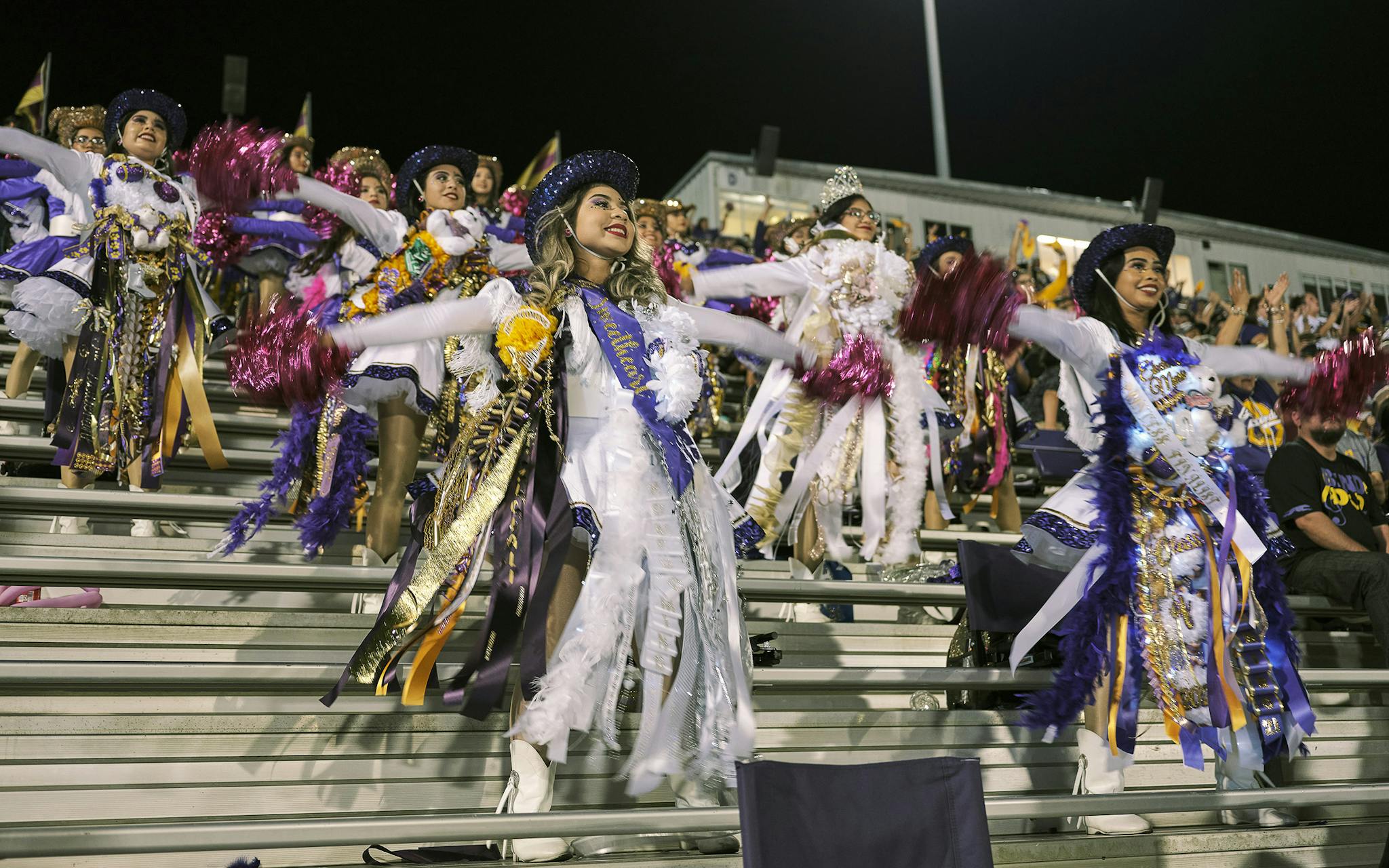
- More About:
- Style & Design
- San Benito
